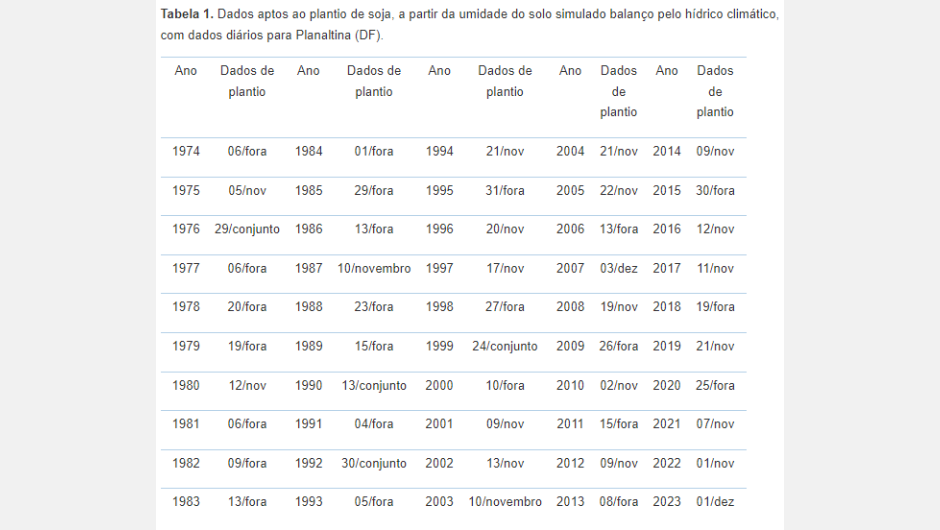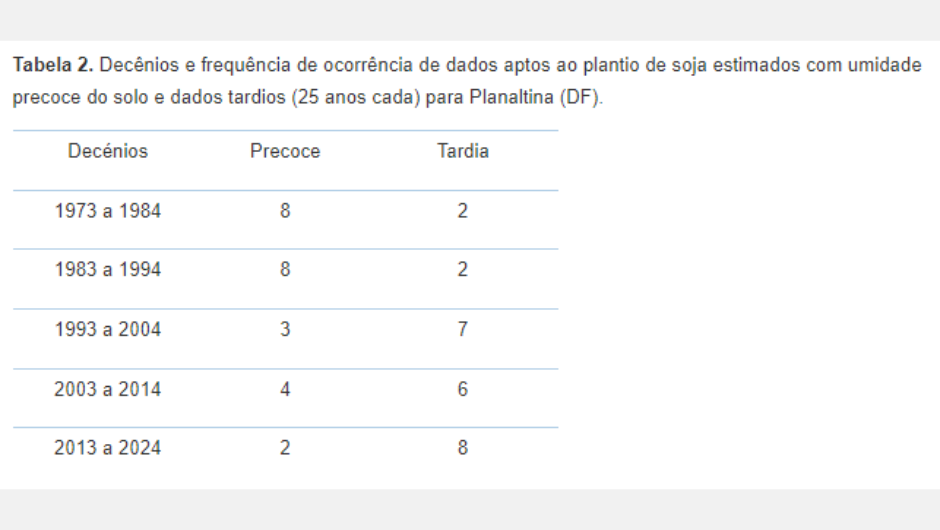Cover crops as allies in the management of herbicide-resistant weeds
By Pedro Jacob Christoffoleti, from Esalq/USP

This year, there was a delay in stabilizing rainfall in the Federal District. This fact is delaying the installation of the main crops in the region, including soybeans, which are normally planted at the beginning of November or even at the end of October, when the rains stabilize that month.
This situation has caused anguish among farmers who had already prepared their planting structure at the end of October, aiming to harvest at the beginning of February and plant another crop soon after (in most cases, second crop corn), taking advantage of the end of the rainy season.
In a simulation of soil humidity, based on meteorological data, collected daily in 2023 at the Embrapa Cerrados agroclimatic station, submitted to the climatological water balance, December 1st was estimated as the date from which conditions of sufficient humidity exist. for planting in the Planaltina region (DF). For this simulation, the soil was considered suitable for planting with more than 60 mm of water available.
However, with the sowing of soybeans in early December, the second harvest in the region is practically impossible. Even using super early soybean cultivars, the harvest should take place around March 40th. However, the recommendation for planting second-crop corn, according to the Agricultural Climate Risk Zoning (Zarc) is until the end of February, even when considering the highest accepted level of loss risk (XNUMX%).
This situation requires the farmer who produces rainfed crops (without irrigation) to opt for a more rustic crop, which could be sorghum or millet, and with a low level of inputs to avoid greater financial losses with high variable cost crops. However, this situation reduces the property's income, as, in addition to losing a second inflow of resources with the commercialization of the second harvest, the producer will have to bear the property's fixed costs, such as depreciation of machinery and equipment, which will even affect on the least profitable crop.
To better understand the climate situation over time, the same soil moisture simulation was carried out for the 50 years of data available at the Embrapa Cerrados agroclimatic station, with the date from which the soil had sufficient moisture for planting the soy. Comparing these years, we observe that the situation in 2023 is one of the most extreme, as it was only in 2007 that a later planting condition occurred.
Although this data seems encouraging, as it is a rare event, which has only occurred twice with this intensity in the last 50 years, the analysis of this becoming a trend is more worrying.
Separating the 25 years with dates in which the soil had moisture for earlier planting, it is observed that the concentration of years with later moisture has been increasing in recent decades in relation to the first two decades, reaching eight dates with late moisture in this period. last decade, an issue that raises concerns for the production chain and calls into question the current system of two rainfed crops. Research should delve deeper into this subject and create adaptation mechanisms for the system if this trend of prolonging the dry season really continues.


*By Arthur Müller, researcher at Embrapa Cerrados

Receive the latest agriculture news by email